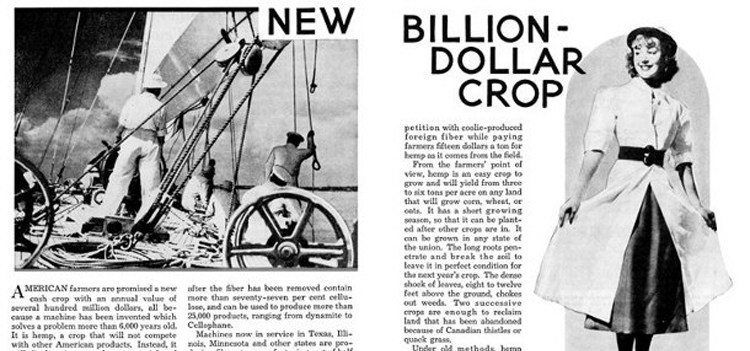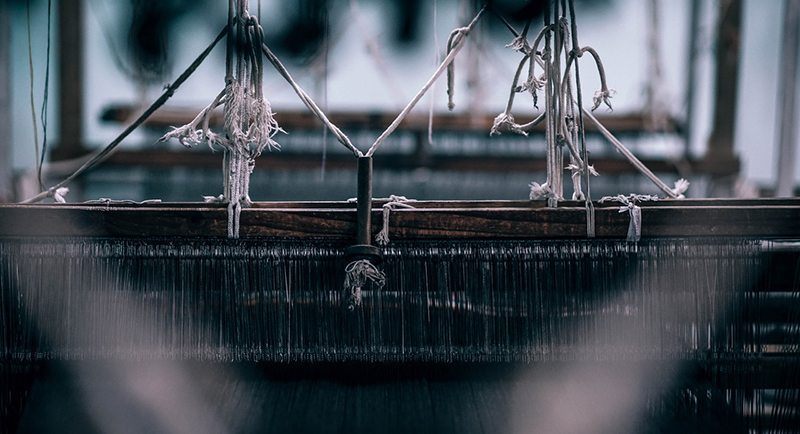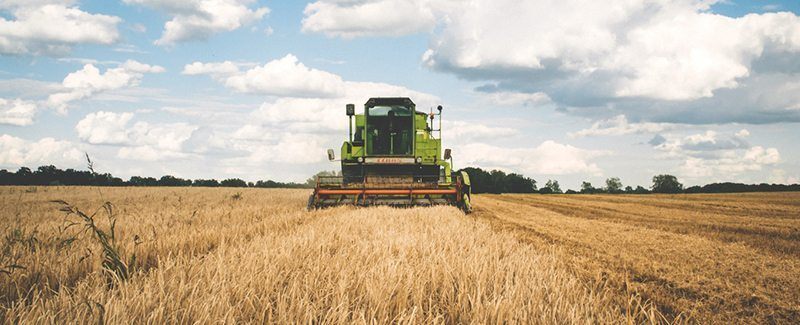Source: ministryofhemp.com

An article featuring hemp in Popular Mechanics Magazine in Feb 1938
Back in 1938, Popular Mechanics issued an article entitled “New Billion-Dollar Crop.” It promised farmers in the United States a lucrative cash crop worth hundreds of millions, one that would not compete with other mainstream products. However, marijuana prohibition followed soon afterward and hemp, the promised billion-dollar crop, became illegal instead. That is, until now…
With the rapid deregulation of cannabis, both industrial hemp and psychoactive cannabis (marijuana), there is every reason to grow hemp once again. Although related to cannabis sativa, hemp contains significantly less THC, offers serious economic benefits, and has a myriad of potential uses. The promises made to farmers back in 1938 may finally become a reality.
THE UNKNOWN BENEFITS OF HEMP
Hemp was once the world’s standard fiber. Its tensile strength remains unmatched to this day and its durability is unduplicatable. The fiber of this plant used to produce over 5,000 different textile products before prohibition, ranging from fine lace to rope, and its cellulose made more than 25,000 products, from cellophane to dynamite. It was an integral part of American history.

This plant is set to become a standard fiber once again. After removing the fiber-bearing cortex from the rest of the stalk, it is possible to make any fiber-based or cellulose-based product on earth, from dresses to houses and even plastics. Every part of the plant is usable, making hemp the most versatile and promising crop for the future. Here are just some of the benefits to expect from this million-dollar crop:
1. HEMP CAN JUMPSTART JOB CREATION
Hemp will not compete with other products made in the United States. Instead, it will lower imports and create jobs. Hemp can displace all raw material imports and manufactured products made in China, India, and everywhere else but here, which will rebuild the manufacturing sector and employ thousands of currently unemployed Americans.
2. EVERY PART OF A HEMP PLANT CAN BE USED = MORE PROFITS FOR FARMERS AND MANUFACTURERS
Fiber-removing machines cut down prohibitive human labor significantly and slash manufacturing costs by half. The rest of the stalk, which contains as much as 77 percent cellulose, also has a highly lucrative market. Every part of the plant is usable and can turn staggering revenues. Manufacturers can make an excellent profit competing with foreign fiber imports, and still pay good prices to farmers per ton.

3. THE ENVIRONMENTAL BENEFITS – HEMP COULD HEAL OUR SOIL
For farmers, hemp is among the easiest crops to grow. It thrives in most soils, but does particularly well on land suitable for oats, wheat, and corn. It grows happily in every state. Its growing season is also short, so farmers can plant it after harvesting their other crops. Per acre, hemp can yield as much as three to six tons.
This plant has long roots that penetrate soil deeply, breaking it up and creating ideal soil conditions for the next year’s crop. It can also reach 12 feet in height, and because it has very dense foliage, it chokes out weeds most effectively. Land abandoned because of quack grass or Canadian thistles is reclaimable after just two successive hemp harvests.
4. IMPROVED PRODUCTION WILL BE THE DIFFERENCE FOR HEMP IN THE 21ST CENTURY
Back in the old days, workers would cut hemp and leave it in the field for several weeks to decompose enough to pull the fibers off by hand. Even the first fiber-extracting machines could not reduce wastage, improve quality, or lower costs during this process. Today’s machines can and will, at a rate of several tons per hour, improve production costs, quality, and wastage.
5. ALL THIS COULD HELP ACCELERATE ECONOMIC GROWTH
The raw fiber of hemp can make strong rope or twine, burlap, carpet warp, and even linoleum backing. It is bleachable and easily refined. Its byproducts are resinous and highly valued commercially. Hemp can replace foreign fibers currently flooding U.S. markets. Before prohibition, the hemp industry was a major economic contributor.
One large powder company, for example, was using hemp to manufacture TNT and dynamite from thousands of tons of hemp each year. Another paper company was growing hemp in Minnesota to make cigarette papers instead of forking out millions annually in foreign import duties. There was an Illinois factory using hemp to produce bond paper. These are a few examples of thousands.
“These are just a few examples out of thousands…”
As a natural material, hemp can be a major economical source of pulp for making the highest quality products. Its high percentage of alpha cellulose promises unlimited supplies of the raw materials needed for thousands of cellulose-based items and fiber-reliant textiles. The U.S. imports almost all linen, burlap, and binder twine from the exploitative labor force of other countries.
We should be exporting these products and many more, which we are currently importing. Canvas, bowstrings, fishnets, rope, damask tablecloths, overalls, clothes, and millions of other everyday products can originate from national farms instead. The exorbitant cost of importing foreign fibers and products should rather become available as income for Americans.
The possibilities for the paper industry are even greater. Instead of importing paper products and destroying forests globally, the country can produce every page of paper it needs itself. On just 10,000 acres of hemp, it is possible to make the same amount of paper currently produced on 40,000 acres of other pulp lands.
BUT FIRST, HEMP NEEDS TO OVERCOME SOME OBSTACLES
Despite the huge benefits of growing hemp crops, many farmers seem reluctant to try it. The law is in flux and currently unstable, and to make money from hemp, farmers must have access to the proper equipment within a reasonable distance of their farms. Without machinery to handle hemp crops, farmers may struggle to find a profitable market, unless manufacturers purchase as is.
Female hemp blossoms contain THC, albeit very low levels of it. It is impossible to grow hemp without the flowers. The federal government still classifies marijuana as a scheduled narcotic, even though California and other states do not. Producing narcotics is federally illegal. States are making their own laws, however. To thrive, the hemp industry only needs regulatory guidelines and approval.
Hemp’s exaggerated connection to marijuana is outdated, though. People grow their own high-level THC plants already. The low-level THC in hemp is inadequate for recreational or medical use. If state and federal regulations can protect people without preventing the legitimate cultivation of hemp, this billion-dollar crop will advance American industry and agriculture immeasurably.
No comments:
Post a Comment